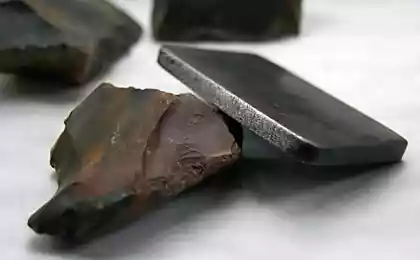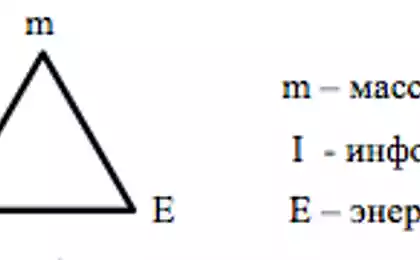150
Energy efficient engine turns hot water waste into electricity
It could lead to lower energy consumption and carbon dioxide emissions for thousands of different businesses, from sea freight to data centers.
Exergyn, based in Dublin, Ireland, plans to launch the first industrial trials of its technology next year.

Exergyn estimates that the heat loss of hot water in industrial processes on a global scale is about 2 times the amount of energy from annual oil and gas production in Saudi Arabia.
“There’s a lot of hot water waste in the world,” says Exergyn CEO Alan Healey. “In most cases, companies actually waste energy to cool it. ?
Cargo ships, for example, typically pump hot water from the engine around the vessel to cool it. And in data centers, electricity-consuming fans are used to cool servers. Finding an efficient way to capture and use this energy will reduce costs and reduce carbon dioxide emissions.
Exergyn Drive uses the special properties of nickel and tin alloy – nitinol. You can bend a nitinol product, but when heated it will return to its original shape. This “shape memory” property makes nitinol desirable in a wide range of applications, including medical devices, unbreakable sunglasses, and NASA’s Mars rovers.
It also has another unusual quality. Unlike most materials, nitinol expands when cooled like water when it turns into ice.
“There are very few materials like this in the universe,” says Mike Langdon, Exergyn’s head of product management.

These two properties are the basis of the Exergyn engine. Inside the device, a beam of meter-long nitinol wires is attached to the piston. Hot and cold water alternately wash the wires every 10 seconds, which causes them to rapidly expand and contract by 4 centimeters, moving the piston up and down. The hydraulic system converts force linear motion into rotational motion, which in turn drives the generator. The engine produces 10 kilowatts of electricity from about 200 kW of thermal energy in hot water waste.
It may not be very effective, but it is “free” energy that would otherwise be wasted. And often it is not just wasted: new energy and money are spent on cooling waste water.
The company spent three years changing the design and materials so that it could run for millions of cycles. Last year, 2.5 million euros were raised from the European Commission’s Horizon 2020 fund to bring the technology to market, and the company is currently planning three industrial trials in 2017: at Dublin Airport and at two landfill sites. In all three cases, the Exergyn technology will use warm water from 90°C or below – from a gas engine at the airport and from biogas generators at landfill sites – to generate electricity on site.
In addition to harnessing waste heat from industrial plants, the company hopes the engine can expand the geothermal energy market. At the moment, generating electricity from geothermal sources in a cost-effective way requires very hot water at high flow rates. This usually involves digging very deep wells with a wide diameter, which significantly increases drilling costs. Langdon says Exergyn technology allows for a wider range of geothermal sites because it works with water at lower temperatures and flow.
John Blows, a former president of the Institution of Diesel and Gas Turbine Engineers who knows the technology but has no stake in the company, agrees that it has a wide range of applications. But he says only a small percentage of them would be viable unless the company found a way to produce the technology cheaply. “It comes down to commercial viability at the end of the day,” he says.
Langdon says the combination of no fuel costs and the machine's mechanical simplicity promises that Exergyn will be able to lower costs. He says he can currently generate electricity for £40 per MWh - cheaper than gas and coal. published
Source: ecotechnology
Exergyn, based in Dublin, Ireland, plans to launch the first industrial trials of its technology next year.

Exergyn estimates that the heat loss of hot water in industrial processes on a global scale is about 2 times the amount of energy from annual oil and gas production in Saudi Arabia.
“There’s a lot of hot water waste in the world,” says Exergyn CEO Alan Healey. “In most cases, companies actually waste energy to cool it. ?
Cargo ships, for example, typically pump hot water from the engine around the vessel to cool it. And in data centers, electricity-consuming fans are used to cool servers. Finding an efficient way to capture and use this energy will reduce costs and reduce carbon dioxide emissions.
Exergyn Drive uses the special properties of nickel and tin alloy – nitinol. You can bend a nitinol product, but when heated it will return to its original shape. This “shape memory” property makes nitinol desirable in a wide range of applications, including medical devices, unbreakable sunglasses, and NASA’s Mars rovers.
It also has another unusual quality. Unlike most materials, nitinol expands when cooled like water when it turns into ice.
“There are very few materials like this in the universe,” says Mike Langdon, Exergyn’s head of product management.

These two properties are the basis of the Exergyn engine. Inside the device, a beam of meter-long nitinol wires is attached to the piston. Hot and cold water alternately wash the wires every 10 seconds, which causes them to rapidly expand and contract by 4 centimeters, moving the piston up and down. The hydraulic system converts force linear motion into rotational motion, which in turn drives the generator. The engine produces 10 kilowatts of electricity from about 200 kW of thermal energy in hot water waste.
It may not be very effective, but it is “free” energy that would otherwise be wasted. And often it is not just wasted: new energy and money are spent on cooling waste water.
The company spent three years changing the design and materials so that it could run for millions of cycles. Last year, 2.5 million euros were raised from the European Commission’s Horizon 2020 fund to bring the technology to market, and the company is currently planning three industrial trials in 2017: at Dublin Airport and at two landfill sites. In all three cases, the Exergyn technology will use warm water from 90°C or below – from a gas engine at the airport and from biogas generators at landfill sites – to generate electricity on site.
In addition to harnessing waste heat from industrial plants, the company hopes the engine can expand the geothermal energy market. At the moment, generating electricity from geothermal sources in a cost-effective way requires very hot water at high flow rates. This usually involves digging very deep wells with a wide diameter, which significantly increases drilling costs. Langdon says Exergyn technology allows for a wider range of geothermal sites because it works with water at lower temperatures and flow.
John Blows, a former president of the Institution of Diesel and Gas Turbine Engineers who knows the technology but has no stake in the company, agrees that it has a wide range of applications. But he says only a small percentage of them would be viable unless the company found a way to produce the technology cheaply. “It comes down to commercial viability at the end of the day,” he says.
Langdon says the combination of no fuel costs and the machine's mechanical simplicity promises that Exergyn will be able to lower costs. He says he can currently generate electricity for £40 per MWh - cheaper than gas and coal. published
Source: ecotechnology
In 2017, the growth of solar energy will stop
In Singapore in early 2017 will launch an unmanned bus























